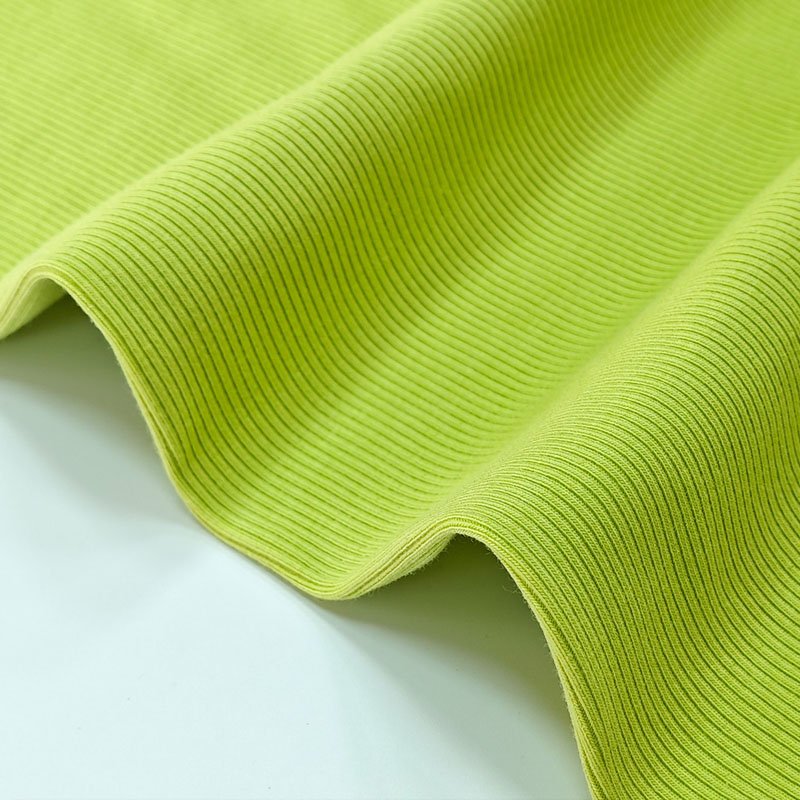
Cotton rib is a unique textile that combines functionality, versatility, and style. Its distinctive ribbed texture and exceptional properties make it a preferred choice for various garments and accessories. Whether you are exploring fabrics for everyday clothing or crafting, understanding cotton rib is essential.
Defined by its alternating knit and purl stitches, cotton rib stands out for its elasticity, durability, and breathability. This fabric is practical and a comfortable and stylish option, widely used in fashion and DIY projects.
To delve deeper into what makes cotton rib remarkable, let us explore its characteristics, types, and applications. This journey will answer common questions about this versatile fabric and its significance in both everyday and specialized contexts.
Cotton rib is a versatile and essential fabric with a variety of applications – True
Cotton rib is limited to specific uses and lacks practicality – False
- 1. What makes cotton rib stretchable and durable?
- 2. Why is cotton rib considered breathable and comfortable?
- 3. What are the common uses of cotton rib?
- 4. What are the types of rib knits?
- 5. Why is cotton rib a staple in fashion and DIY projects?
- 6. How does cotton rib compare to jersey knit?
- 7. Why is cotton rib ideal for form-fitting garments?
- 8. How does cotton rib compare to interlock knit?
- Conclusion
- Reference
1. What makes cotton rib stretchable and durable?
Cotton rib’s stretch and durability are among its most celebrated features. These qualities make it an ideal fabric for activewear and form-fitting garments, ensuring both comfort and longevity.
The alternating knit and purl stitch construction of cotton rib provides exceptional elasticity, allowing it to stretch without losing shape. Its durability ensures the fabric can endure regular use and washing.
How does cotton rib provide elasticity and durability?
- The ribbed texture and vertical ridges contribute to the fabric’s elasticity, allowing garments to move with the body.
- The strength of cotton fibers combined with ribbing increases the fabric’s resilience, making it resistant to wear and tear.
Cotton rib is highly durable and maintains its shape even after frequent washing – True
Cotton rib loses its elasticity quickly when stretched repeatedly – False
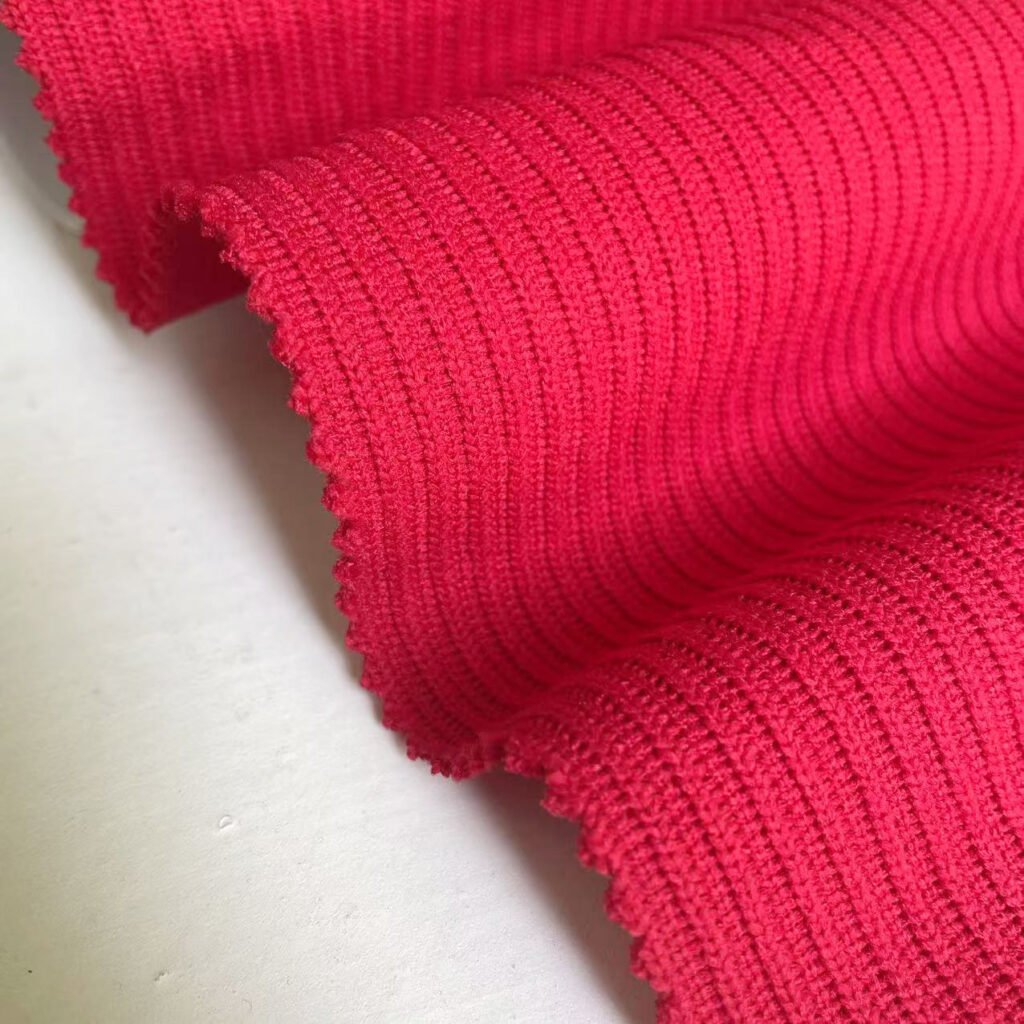
2. Why is cotton rib considered breathable and comfortable?
One of the reasons cotton rib is widely favored is its superior breathability and comfort. These properties make it an excellent choice for warm-weather wear and sensitive skin.
As a natural fiber, cotton facilitates excellent air circulation, allowing the fabric to remain cool and comfortable. The ribbed construction enhances the fabric’s softness, ensuring a pleasant experience against the skin.
What makes cotton rib breathable and comfortable to wear?
- Cotton’s moisture-wicking properties and ability to promote ventilation make cotton rib suitable for all climates.
- The ribbing creates a soft, luxurious texture, making it especially popular for casual and loungewear.
Cotton rib is highly breathable and suitable for hot climates – True
Cotton rib causes discomfort and traps heat during wear – False

3. What are the common uses of cotton rib?
From casual clothing to accessories, cotton rib’s versatility has made it a staple in the textile world. Its adaptability ensures it remains relevant across diverse fashion trends and practical applications.
Cotton rib is commonly used in T-shirts, tank tops, sweaters, dresses, and activewear. Additionally, its flexibility makes it a favorite for crafting accessories like headbands and scarves.
Why is cotton rib perfect for fitted and versatile garments?
- The stretch of cotton rib makes it ideal for fitted garments like T-shirts and leggings.
- Its ribbed texture adds visual depth in sweaters and dresses, while also making it a great choice for activewear and accessories.
Cotton rib is widely used in both clothing and crafting projects – True
Cotton rib has limited applications due to its fragility – False
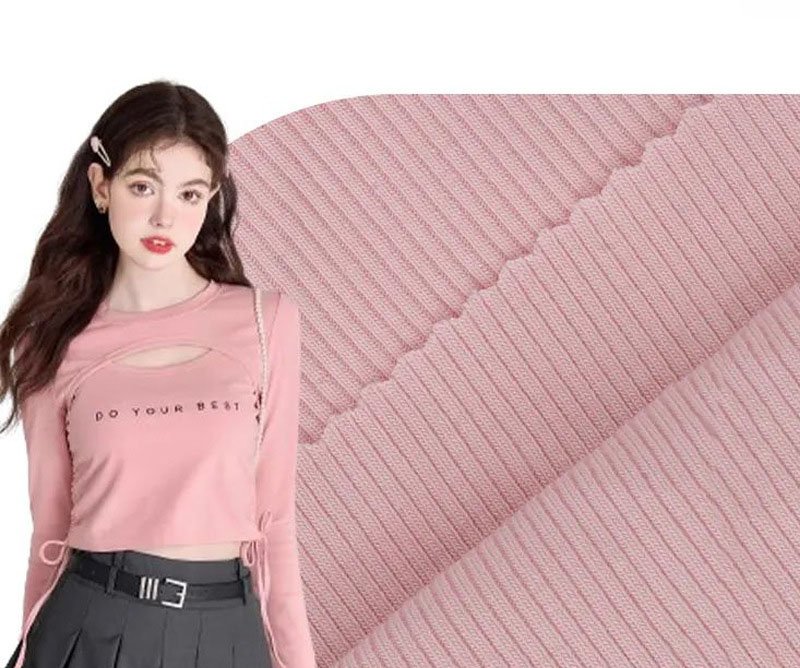
4. What are the types of rib knits?
Not all rib knits are created equal. Different patterns and styles of ribbing offer varying levels of texture, elasticity, and visual appeal, catering to diverse needs.
Common types of rib knits include 1×1, 2×2, and other variations such as 4×2 or 8×3. Each type differs in the arrangement of knit and purl stitches, resulting in unique characteristics.
What are the differences between 1×1, 2×2, and larger rib patterns?
- The 1×1 rib creates a subtle texture with minimal stretch.
- The 2×2 rib offers a more pronounced texture and increased elasticity.
- Larger patterns like 4×2 or 8×3 ribs provide deeper textures for decorative or specialty garments.
Rib knit types vary in texture and elasticity based on their stitch patterns – True
All rib knits have the same texture and stretch characteristics – False

5. Why is cotton rib a staple in fashion and DIY projects?
Cotton rib’s unique properties make it a cornerstone of both professional fashion design and personal DIY projects. Its combination of comfort, durability, and aesthetic appeal is unmatched.
This fabric’s versatility allows it to be used in everything from high-fashion garments to home crafting endeavors. Its durability and ease of use further cement its place as a favorite among designers and hobbyists alike.
How does cotton rib fit into both casual and formal fashion?
- Cotton rib adapts easily to both casual and formal styles, making it versatile in fashion.
- Its stretch and soft texture make it easy to work with, particularly for DIY enthusiasts creating custom-fit garments.
Cotton rib is a versatile and reliable fabric for diverse projects – True
Cotton rib is challenging to work with and lacks versatility – False
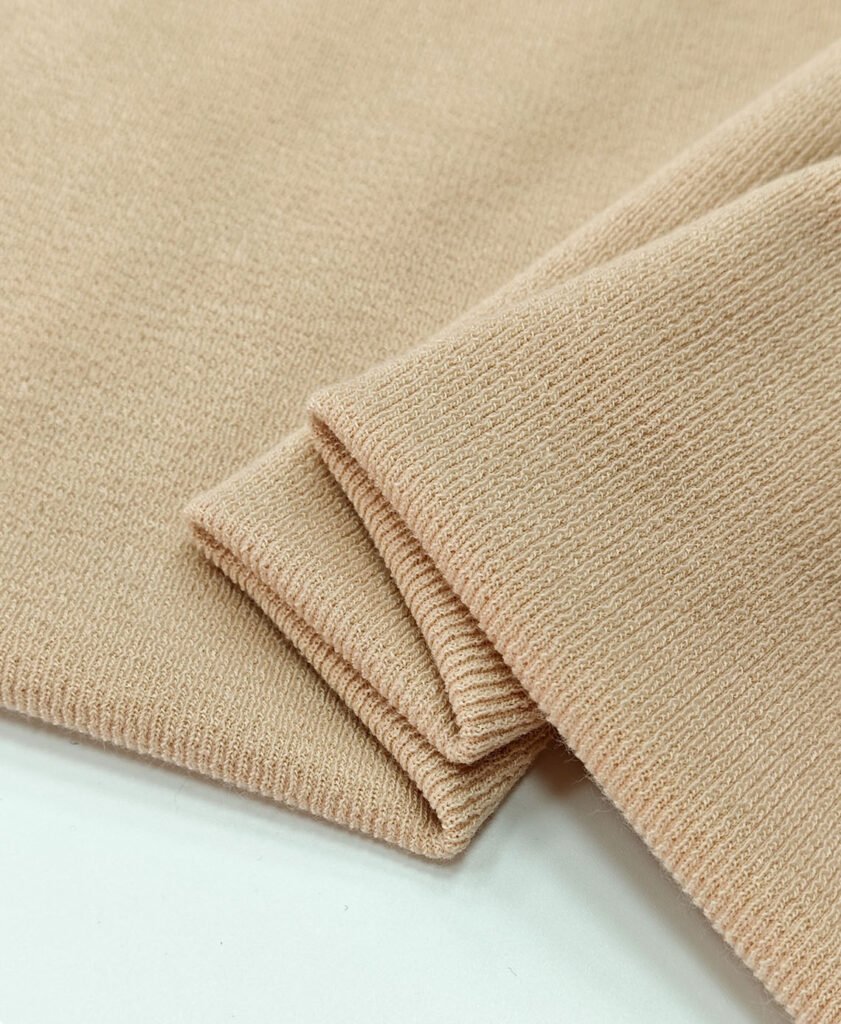
6. How does cotton rib compare to jersey knit?
Cotton rib and jersey knit are two widely used knit fabrics, each offering distinct features. While both are popular for their comfort and flexibility, their structural differences lead to varied applications.
Jersey knit has a smooth surface and a clear distinction between its front and back, making it ideal for lightweight garments. In contrast, cotton rib’s ribbed texture provides superior elasticity and durability, suitable for form-fitting and resilient clothing.
Compare
- Cotton rib’s alternating knit and purl stitches provide excellent stretch and shape retention, ideal for cuffs and waistbands.
- Jersey knit, while breathable and lightweight, offers less stretch and durability compared to cotton rib.
Cotton rib is more durable and elastic than jersey knit – True
Jersey knit offers greater elasticity than cotton rib – False
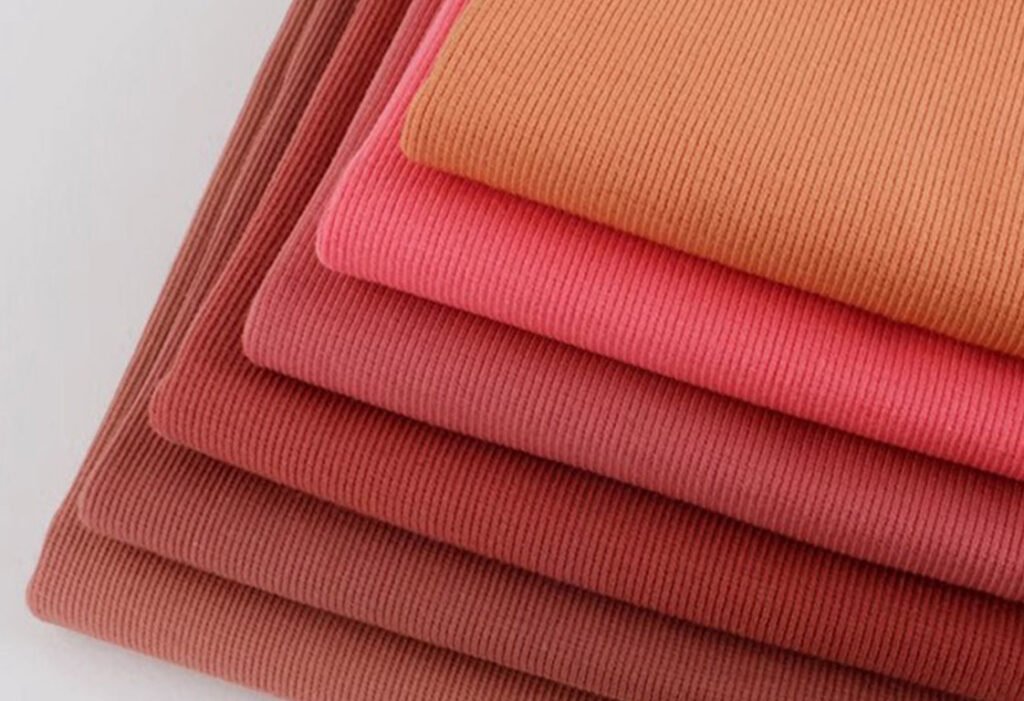
7. Why is cotton rib ideal for form-fitting garments?
Cotton rib is a go-to fabric for form-fitting clothing due to its exceptional stretch and recovery properties. These qualities ensure that garments maintain their shape while offering a snug yet comfortable fit.
The ribbed texture of cotton rib enables it to stretch and adapt to body movements without losing its structural integrity. This makes it an excellent choice for activewear, undergarments, and fitted tops.
What sets cotton rib apart from other fabrics in terms of flexibility?
- The vertical ridges of cotton rib allow the fabric to move with the wearer, offering maximum flexibility.
- The durability of cotton fibers ensures the fabric retains its fit and comfort over time.
Cotton rib’s stretch and recovery make it perfect for form-fitting garments – True
Cotton rib cannot retain its shape after repeated use – False

8. How does cotton rib compare to interlock knit?
Cotton rib and interlock knit are often compared due to their similar applications, yet they differ significantly in structure and properties. Understanding these differences helps in selecting the right fabric for specific needs.
Interlock knit is thicker and smoother on both sides, offering a polished appearance and enhanced durability. Cotton rib, however, provides better stretch and is more suited for garments requiring flexibility and fit.
Compare
- Cotton rib is more elastic than interlock fabric, making it perfect for dynamic garments like leggings and fitted tops.
- While interlock is stable and smooth, it lacks the flexibility and stretch that cotton rib provides.
Cotton rib offers greater elasticity compared to interlock knit – True
Interlock knit is more elastic than cotton rib – False

| Feature | Cotton Rib | Jersey Knit | Interlock Knit | French Terry | Fleece Knit |
| Texture | Ribbed, with vertical lines | Smooth, distinct right/wrong side | Double-faced, smooth on both sides | Looped on one side, smooth on the other | Thick, soft pile |
| Stretch | Excellent stretch and recovery | Moderate stretch (less than rib) | Less stretchy than rib | Moderate stretch | Good stretch |
| Breathability | High (natural fiber) | High (depends on fiber blend) | Moderate | High (moisture-wicking) | Moderate |
| Durability | Durable and retains shape | Less durable (edges curl easily) | Very durable | Durable | Durable |
| Common Uses | Cuffs, waistbands, t-shirts | T-shirts, dresses | Pants, skirts | Casual wear, loungewear | Activewear |
| Care | Easy to care for | May require special care | Easy to care for | Easy to care for | Easy to care for |
Conclusion
Cotton rib exemplifies the perfect balance of form and function in the textile industry. Its ribbed construction, derived from alternating knit and purl stitches, provides unparalleled elasticity, durability, and comfort. This fabric’s adaptability shines through in its myriad applications—from fitted garments to stylish accessories. Cotton rib’s ability to merge practicality with aesthetics ensures it remains a cornerstone in both fashion and DIY endeavors. As a fabric that caters to diverse needs and preferences, cotton rib is truly indispensable for anyone seeking a versatile and dependable textile solution.

